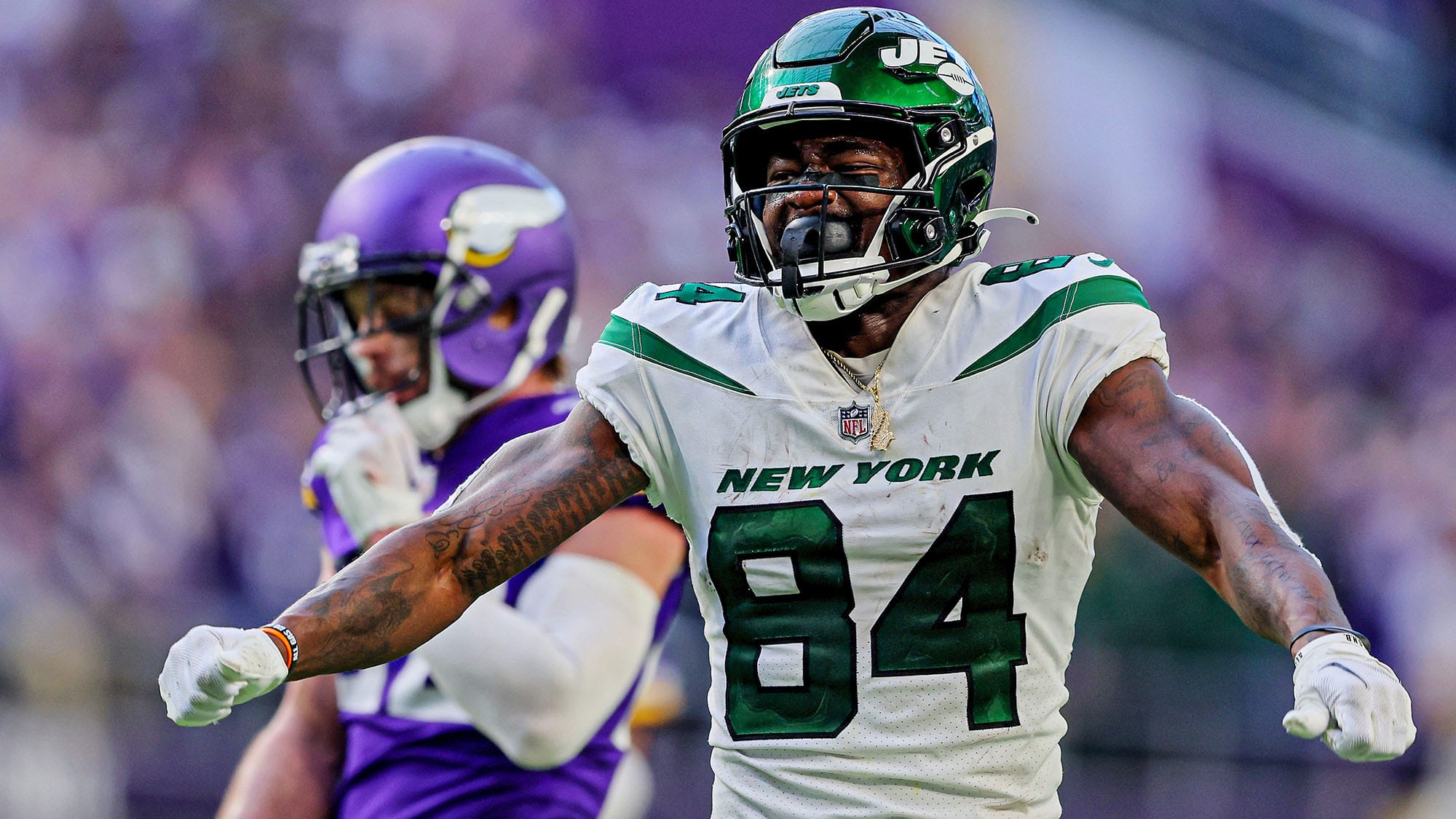Releasing Corey Davis would probably not be a net positive move for the New York Jets
Wide receiver Corey Davis is commonly mentioned as one of the New York Jets‘ most likely cut candidates of the 2023 offseason. On his current contract, Davis is set to have a cap hit of $11.2 million in 2023, which is the final year of his three-year contract with New York. If the Jets release Davis, they will clear $10.5 million in cap space while only taking on $667K in dead money. It’s a very escapable contract.
On paper, this may sound enticing for a team that needs more cap space. However, the possibility becomes far less intriguing when considering what it might cost to find a replacement for Davis.
According to Patriots reporter Mike Reiss of ESPN, free-agent-to-be WR Jakobi Meyers is expected to command a contract in the range of $15 million to $20 million per year.
Jakobi Meyers could make in the range of $15M to $20M per year, according to @MikeReiss.
Retaining Meyers, a leader in the building, will come at a cost. pic.twitter.com/9VWY1yGgAA
— Boston Sports Gordo (@BOSSportsGordo) February 26, 2023
For comparison’s sake, here is a side-by-side look at Davis and Meyers’s per-game numbers over the past three seasons:
- Davis: 3.6 catches for 55.9 yards, 2.8 first downs, and 0.31 touchdowns (Per 17 games: 61 catches for 950 yards, 47 first downs, and 5 touchdowns)
- Meyers: 4.6 catches for 53.3 yards, 2.6 first downs, and 0.18 touchdowns (Per 17 games: 79 catches for 906 yards, 44 first downs, and 3 touchdowns)
Read More Jet X Content:
Article: One issue has plagued both top NY Jets quarterback targets
Article: Why it might be tough for NY Jets to boost Bryce Huff’s snap count
Article: Raiders expert gives NY Jets fans the cold-hard Derek Carr truth
Davis and Meyers are very similar players in terms of production. Yet, Meyers is likely about to earn a contract that averages somewhere from $4-9 million per year more than Davis’s projected cap hit in 2023.
That’s just the reality of the NFL’s booming wide receiver market. For a few years now, the going rate for wide receivers has been increasing each offseason. The general expectation each year is that any coveted free agent wide receiver will exceed the price that a player of the same caliber would have earned in the previous offseason.
For this reason, there is a lot of value to be had in wide receivers who are on the back end of a multi-year deal. When Davis signed his contract in 2021, it may have been seen as an overpay by some. Fast forward to today, and if you want to get a receiver of Davis’s caliber in free agency, it will cost you significantly more than Davis does.
This is why the Jets would be wise to keep Davis in 2023. Releasing Davis would be a net-negative move from a cap standpoint.
Cutting Davis would open up a new hole that needs to be filled, as the Jets do not have a viable in-house replacement to take his spot at no extra cost (no, Denzel Mims is not a realistic option to replace Davis). So, they’d have to look elsewhere to replicate his production.
If the Jets use the free agent market to replace Davis, they would likely have to spend more than Davis’s $11.7 million cap number to find a replacement who is similarly effective, which is obviously a negative move.
The cap-friendlier option would be to try and use the draft to replace Davis. This could lead to a fantastic outcome in the dream scenario that a rookie matches Davis’s production at a much cheaper cost.
However, the chances of a rookie receiver matching Davis’s production are not high, especially if the player is selected after the first round (it seems unlikely the Jets will draft a WR in round one this year). Consider: Over the past 10 seasons, there have been 50 wide receivers drafted in the second round, and only five of them averaged more than 55.9 yards per game (Davis’s 2020-22 average) in their rookie season. Even if you look at first-round rookies, only 12 of 42 have hit that mark over the past 10 seasons.
Keeping Corey Davis seems to be the wisest option for the Jets.

